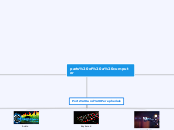parts of a cumputer
Core

Motheroard
a printed circuit board containing the principal components of a computer or other device, with connectors into which other circuit boards can be slotted.

CPU
the part of a computer in which operations are controlled and executed.
RAM
a type of data storage used in computers that is generally located on the motherboard. This type of memory is volatile and all information that was stored in RAM is lost when the computer is turned off.
Drives
a type of data storage used in computers that is generally located on the motherboard. This type of memory is volatile and all information that was stored in RAM is lost when the computer is turned off.

Cooling Devices
The phrase cooling in computing generally refers to the dissipation of large amounts of heat, which is created while a computer system is running. Heat is generated inside the computer tower by various hardware such as CPU, video card or even the hard drive.
Ports and Perepherials
Graphics Card
a printed circuit board that controls the output to a display screen.
USB
is a common interface that enables communication between devices and a host controller such as a personal computer (PC). It connects peripheral devices such as digital cameras, mice, keyboards, printers, scanners, media devices, external hard drives and flash drives.

Ethernet
a system for connecting a number of computer systems to form a local area network, with protocols to control the passing of information and to avoid simultaneous transmission by two or more systems.

Video
the recording, reproducing, or broadcasting of moving visual images.

Audio
sound, especially when recorded, transmitted, or reproduced.
"audio equipment"
Keybored
a panel of keys that operate a computer or typewriter.
microphone
an instrument for converting sound waves into electrical energy variations, which may then be amplified, transmitted, or recorded.

webcam
a video camera that inputs to a computer connected to the Internet, so that its images can be viewed by Internet users.
headphone
a pair of earphones typically joined by a band placed over the head, for listening to audio signals such as music or speech.

monitor
an instrument or device used for observing, checking, or keeping a continuous record of a process or quantity.

printer
a person whose job or business is commercial printing.
a machine for printing text or pictures onto paper, especially one linked to a computer.
Operating System

process management
Business process management (BPM) is the discipline of improving a business process from end to end by analyzing it, modelling how it works in different scenarios, executing improvements, monitoring the improved process and continually optimizing it.

memory management
Memory management is the process of controlling and coordinating computer memory, assigning portions called blocks to various running programs to optimize overall system performance. Memory management resides in hardware, in the OS (operating system), and in programs and applications.

device management
Within the computer, activating and controlling the peripheral devices. In a desktop computer, the operating system interacts with the device drivers for peripheral control. In very small embedded systems, the device management routines may be included within the OS.

storage management
Storage management usually refers to the management of Computer data storage, which includes memory management. It can also refer to specific methods or products for storage management, such as the following. ADSTAR Distributed Storage Manager. Automatic Storage Management. Hierarchical storage management.

user interface
the means by which the user and a computer system interact, in particular the use of input devices and software.
